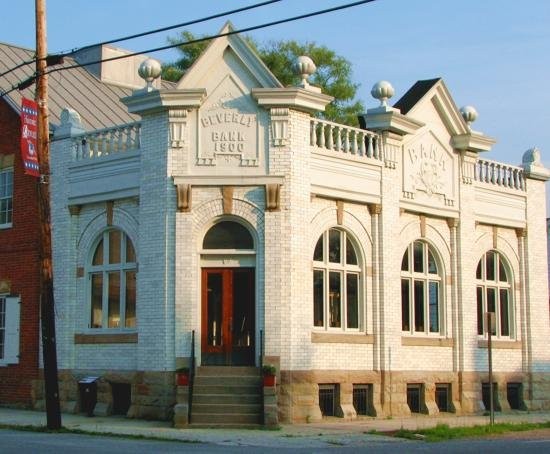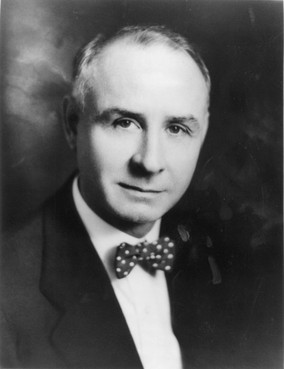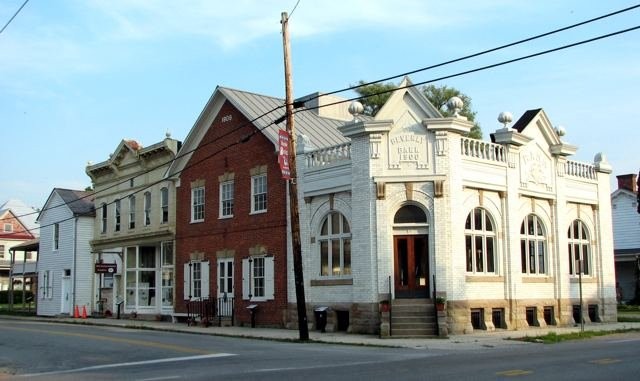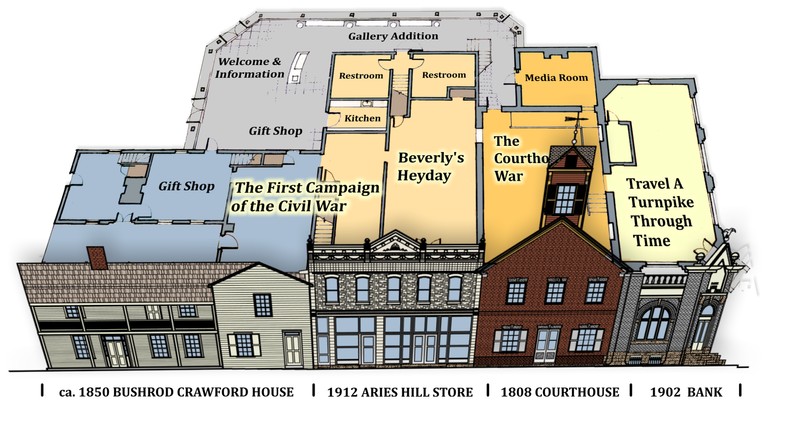Former Bank of Beverly
Introduction
Text-to-speech Audio
Images

Former Bank of Beverly, closed during the bank holiday of March 1933. Courtesy of Historic Beverly Preservation, Inc.

Herman Guy Kump, governor of West Virginia during the bank holiday that resulted in the Beverly Bank's closure in 1933. Courtesy of Wikipedia.

Exterior photo of the Beverly Heritage Center, which combines the Beverly Bank building with three other buildings on Court Street. Courtesy of Historic Beverly Preservation, Inc.

Map of Beverly Heritage Center's interior. Courtesy of the Beverly Heritage Center.

Backstory and Context
Text-to-speech Audio
As one of the four historic buildings on Court Street that the Beverly Heritage Center owns and operates as a museum and community center, the Beverly Bank building plays a unique role in local efforts at historical education and preservation. It has long enjoyed noteworthy status in the community of Beverly as one of several buildings constructed in the early twentieth century that rewrote the landscape of the town and leant it its current appearance. The Beverly Bank building, along with the Hill building, Masonic Lodge, Beverly Store, and International Organization of Odd Fellows (I.O.O.F.) Hall, rose during the same period, lending the town a more Neoclassical architectural bent throughout the twentieth century. When the bank closed in 1933 during Franklin Roosevelt’s first “bank holiday” the town’s economic circumstances were not sufficient to merit its reopening. In the twenty-first century, however, the building gained new life as one of four adjacent structures on Court Street that became part of the Beverly Heritage Center.
The Beverly Bank building has a number of architectural features that make it a fairly representative example of the Neoclassical Revival style that was popular through the United States in the late nineteenth and early twentieth centuries. The metal balustrade and triangular pediment on the structure’s front and sides are particularly noteworthy, as are the arched windows and rectangular columns ending in ball finials (decorative ornamentation at the top or end of an architectural feature). The entire building is of glazed brick, a more cost-effective building material at the time of its construction but one that detracts from the structure’s Neoclassical character (which generally sought to replicate the uniform, unbroken lines of Greek and Roman architecture like the Parthenon and Pantheon). Still, as the intended financial center of Beverly’s much-hoped for twentieth-century Renaissance the Beverly bank sought to live up more to its function that its form, which it did for nearly three decades while its town’s residents sought to recapture the influence their community enjoyed in the surrounding area during the previous century.
During that century, the nineteenth, Beverly served as the county seat of Randolph County and a major thoroughfare for regional trade via the Staunton-Parkersburg Turnpike that ran through town. When West Virginia senators Henry Gassaway Davis and Stephen Benton Elkins collaborated in the 1890s to establish the town of Elkins less than ten miles away as a railroad hub servicing the West Virginia Central and Pittsburgh Railway, however, Beverly began to lose ground economically to its new and rapidly expanding northern neighbor. Built next door to the Beverly courthouse the year after the county seat was moved to Elkins, the new Bank of Beverly was largely intended as a means of making up for community's losses to Elkins.
Ultimately, however, such efforts simply could not stand up to the economic onslaught brought by the arrival of the Great Depression. West Virginia was among the hardest hit by the economic downturn that followed the collapse of the stock market in 1929 and Beverly was no exception. The initial federal and state-level responses to the crisis, led by the Republican Party that occupied the White House under President Herbert Hoover and the governor’s seat in Charleston under William G. Conley, came under increasing fire from Democrats who accused their opponents of a failure to acknowledge the gravity of the situation. Their accusations found a receptive audience among a state- and nationwide electorate suffering from an unprecedented level of unemployment, and the Democratic Party swept Republicans out of office in landslide victories across West Virginia and the broader United States. The 1932 election resulted in the ascendance of Franklin Roosevelt to the presidency and Herman Guy Kump to the Mountain State’s governorship. Together, they enacted a sweeping series of economic reforms that imposed stricter regulations on the banking industry and provided a financial safety net for those impacted most by the Depression.
One of their first moves in office was the announcement of a “bank holiday,” intended in large part to stem the tide of so-called “bank runs” (during which patrons withdrew the entirety of their savings from local banks, leaving their community’s financial institutions in dire straits and largely incapable of operating effectively). Roosevelt announced his first “bank holiday” for federally-certified banks on March 5, 1933 and recommended that state governors consider doing likewise for institutions with state-level certification.
Kump,
whose wife was from Beverly, quickly followed suit, and although Roosevelt
largely succeeded in convincing American citizens to once more trust their
banks with a radio address on March 12 (the first of his famous “fireside
chats” as president), West Virginia was a different story. There Kump
discovered that the incumbent commissioner of banking, L.R. Charter, had
allowed every bank in the state to reopen regardless of individual
circumstances. So, he replaced Charter with Bluefield banker Waitman C. Given
on March 24, who began closing banks that he deemed incapable of maintaining
financial solvency. The Beverly Bank was among those that Given closed during
this period. After that, the economic circumstances of Beverly and the surrounding area continued to worsen. In response, the federal government established a Civilian Conservation Corps camp nearby (Camp Tygart) to offer area residents employment as well as an affordable housing complex on over 2,500 acres of land named the Tygart Valley Homestead.
While Beverly itself was able through such efforts to get back on its feet after the Depression, the Beverly Bank building took several more decades to find a new purpose. It did so in the early twenty-first century as part of the Beverly Heritage Center opened in 2012. The center, which resulted from a collaboration beginning in 2004 between several community organizations that included Historic Beverly Preservation, the Rich Mountain Battlefield Foundation, and the Staunton-Parkersburg Turnpike Alliance, serves the town as a museum and community center. A rear addition built prior to the opening of the center combines the former bank building with the adjacent structures of the old Beverly Courthouse, Hill building, and Bushrod Crawford house, all of which are situated along Court Street. As a window into the political and economic history of Beverly, the bank building stands as a unique reminder of the experiences of a community struggling to survive the impact of devastating legal and financial upheavals. As part of the Beverly Heritage Center, it serves as a testament to that community’s revival in the following decades.
